The Miniature Rooms of Narcissa Niblack Thorne
The Thorne miniature rooms are the brainchild of Narcissa Thorne, who crafted them between 1932 and 1940 on a 1:12 scale. Incredibly detailed and...
Maya M. Tola 9 January 2025
The Victoria and Albert Museum in London has a fantastic collection of jewelry. This time we will take a look at pieces inspired by natural forms. Nature-inspired jewelry, decorated with clearly recognizable flowers or fruit, emerged with the Romantic movement in the early 19th century. It remained popular for many decades.
This fashion trend started in the early years of the 19th century with the widespread interest in botany and the influence of Romantic poets such as Wordsworth. By the 1850s the delicate early designs had given way to more extravagant and complex compositions of flowers and foliage. The flowers and foliage consisted of diamonds, pearls, and enamel.
The Victoria and Albert jewelry collection includes a gold Celtic breastplate, jeweled pendants given by Elizabeth I to her courtiers, as well as diamonds worn by Catherine the Great of Russia, jewelry by the Art Nouveau designer, Réné Lalique, diamond tiaras by Cartier, and contemporary works by Wendy Ramshaw, Peter Chang, and Marjorie Schick.
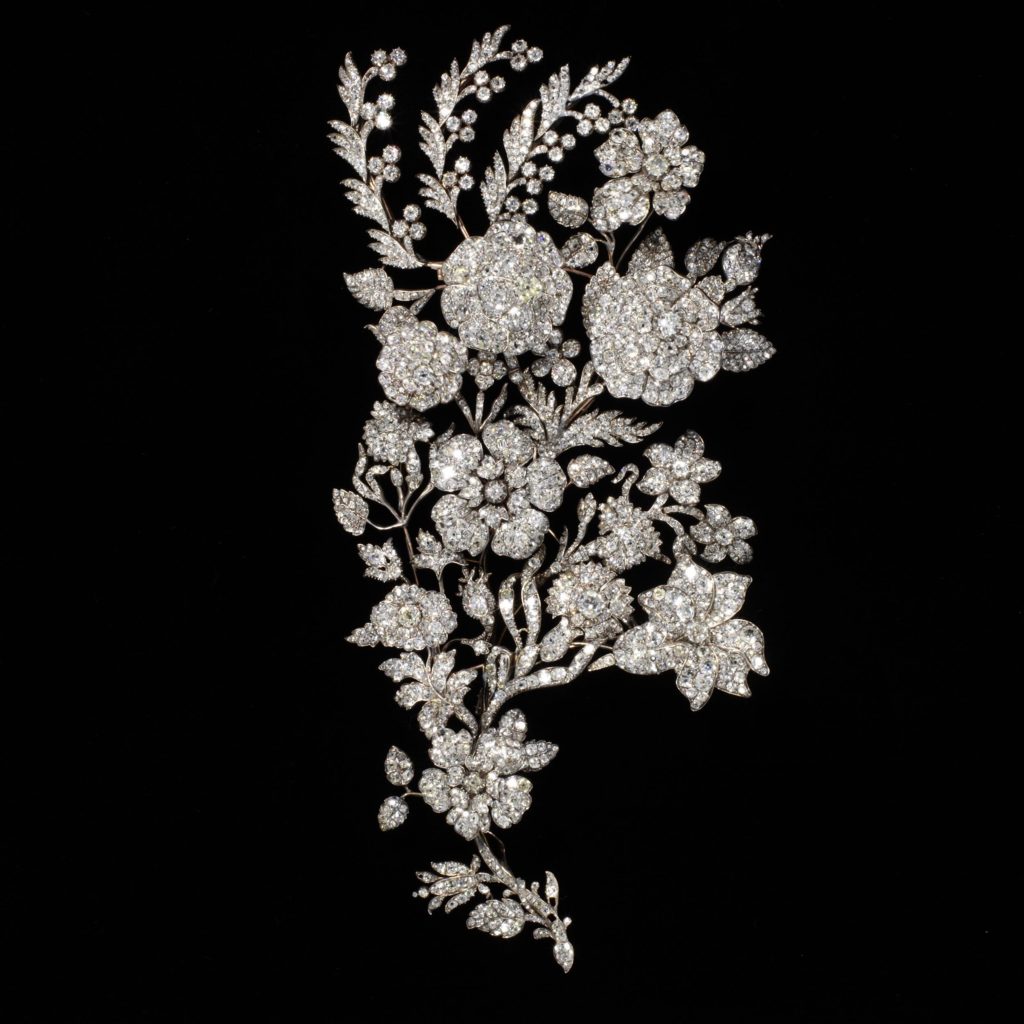
This large spray of assorted flowers has a pin fastening on the back and women would wear it as a bodice ornament. In addition to its size and number of diamonds, the diamond flowers are set on springs, increasing their sparkle considerably as the wearer moves. Over time the floral motifs became bigger. By the 1850s bouquets had taken on dramatic proportions.
Personally, I would have two slight problems with this fantastic piece. For one, it has the potential to cause accidents, imagine wearing it on the street in the sun, it would give a blinding sparkle! The other issue is more fundamental and I have it with all the pieces shown here: they are so beautiful that instead of wearing them I would just sit and look at them.
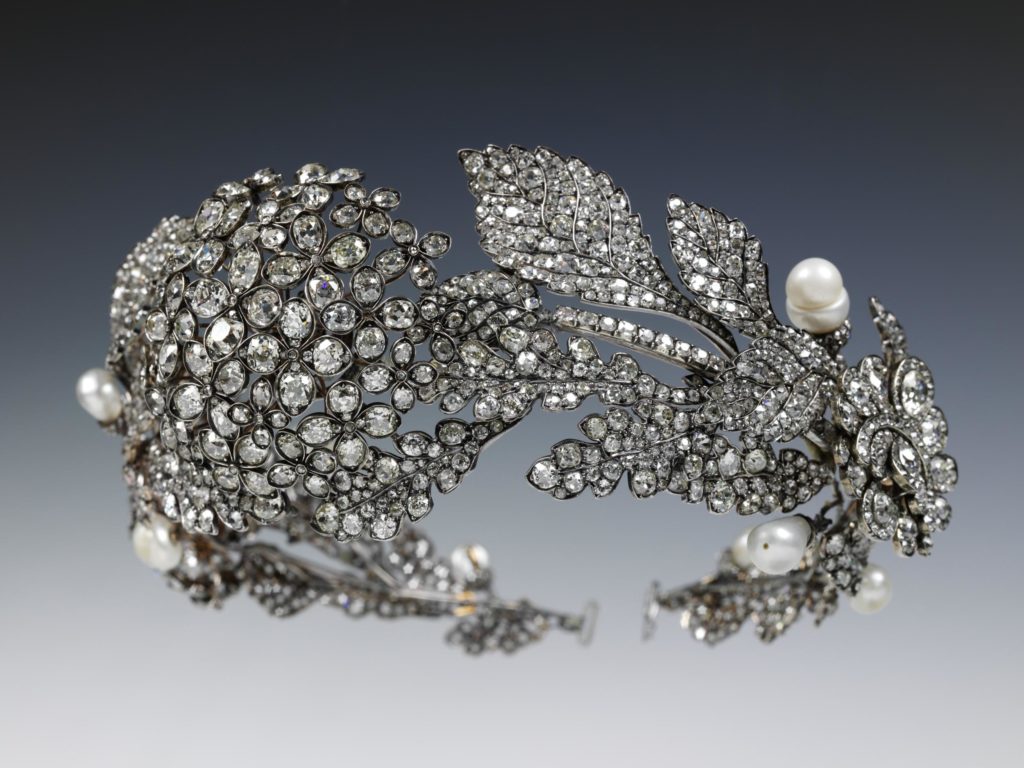


Wreaths of flowers and foliage were in fashion throughout the 19th century. Sometimes they included real flowers or artificial ones made of fabric, wax, or porcelain. At the same time, people often expressed love and friendship through flowers. Since gemstones are matched to natural flower colors, the language of flowers spelled out special messages.
In contrast with earlier periods, the more elaborate jewelry was worn almost exclusively by women. Now it seems obvious, but imagine what a sad change that must have been! To have to stop wearing all those dazzling pieces!
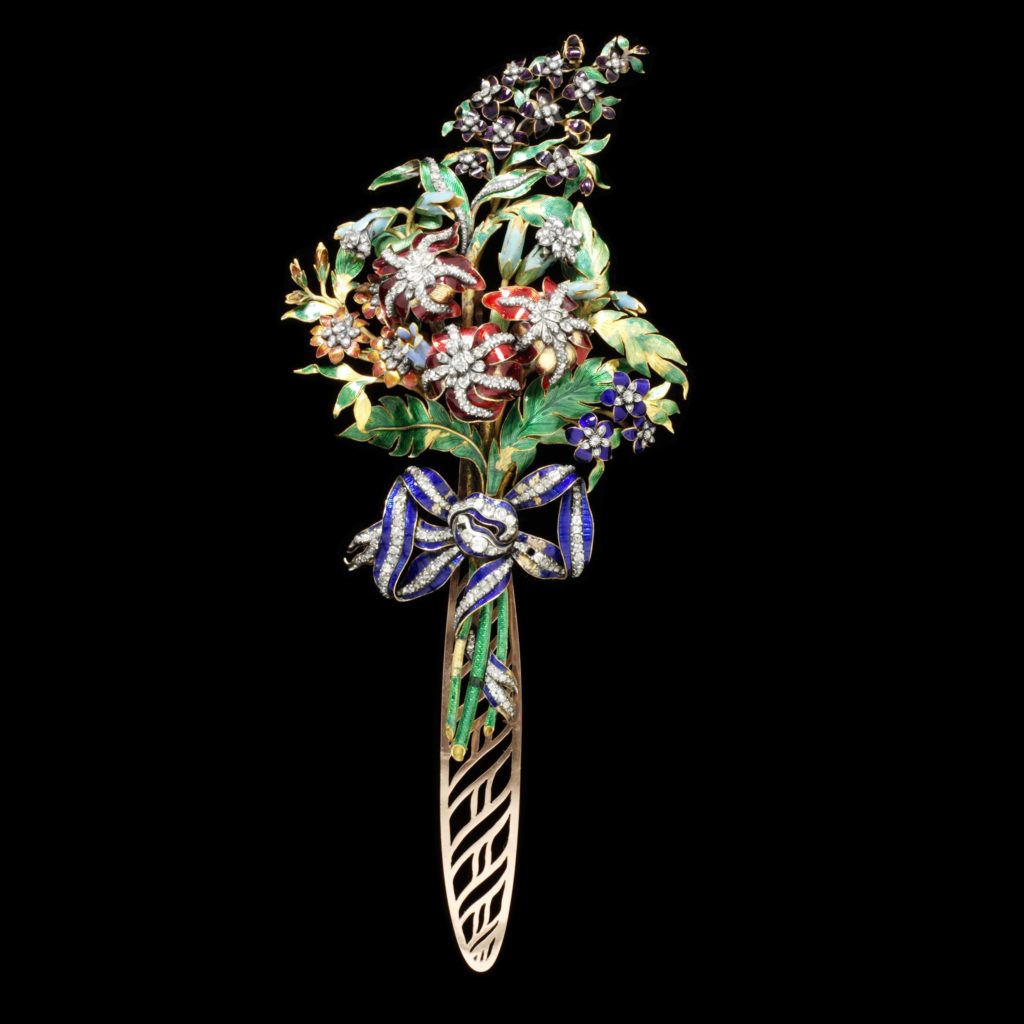


A lady would wear this magnificent jeweled bouquet as a bodice ornament, attached with a removable metal hook. We know that a Spanish noblewoman, Doña Juana Rabasa (wife of the Finance Minister of Charles IV of Spain) was the original owner. She gave it to the shrine of the Virgin of the Pillar at Saragossa.
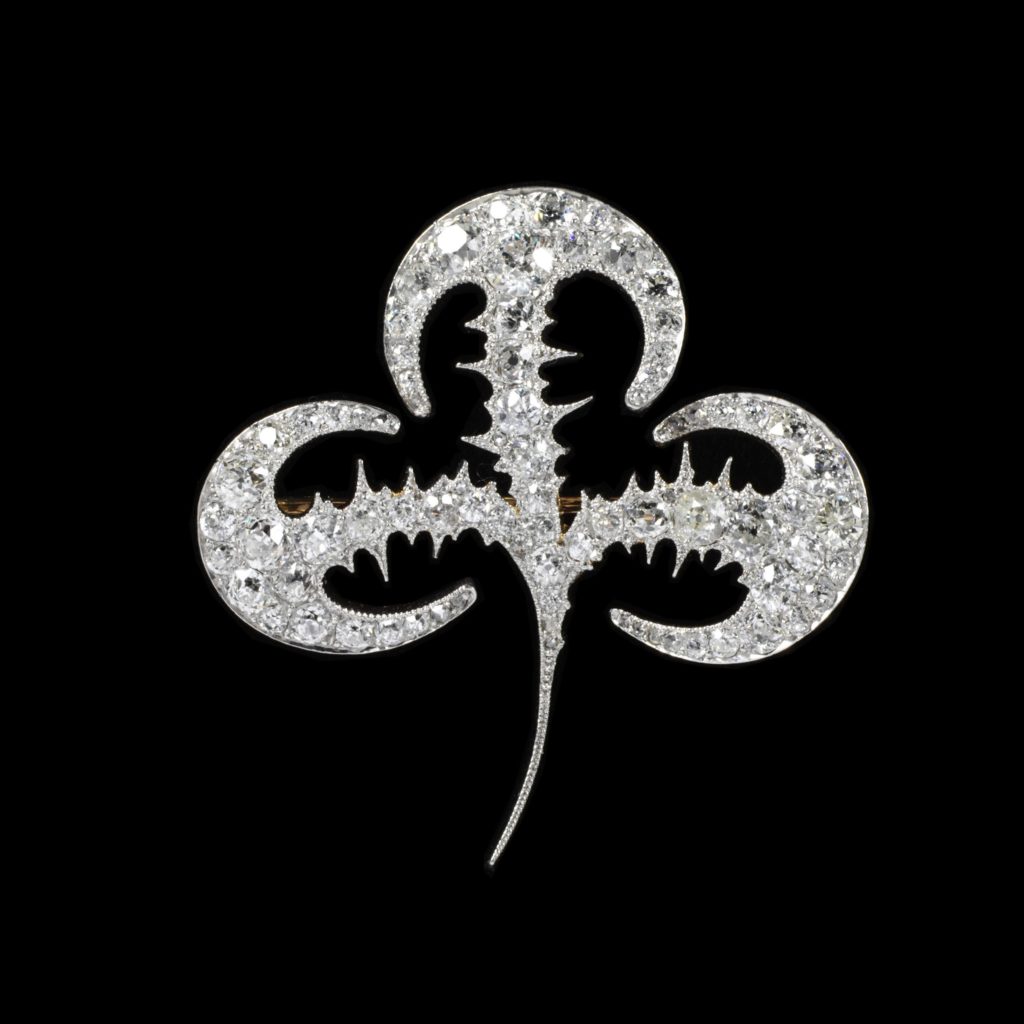


René Lalique was Art Nouveau’s most important jeweler. He developed a new stylistic language based on sinuous interpretations of natural forms and championed non-precious materials such as enamel, glass, and horn. The resulting pieces were both dramatic and ethereal, and very influential among other jewelers who went on to work in the Art Nouveau style.
Made in about 1895, this brooch shows Lalique’s developing interest in stylized motifs from nature. Generally, he tended to distance himself from conventional precious stones. However, it was designed for Tiffany & Co. and perhaps as a result is realized in conventional diamonds.
The diamonds may be conventional but there are no stones that beat them when it comes to a good sparkle. I think that in comparison with the other pieces, this one is almost casual, an everyday thing to be worn to the office.
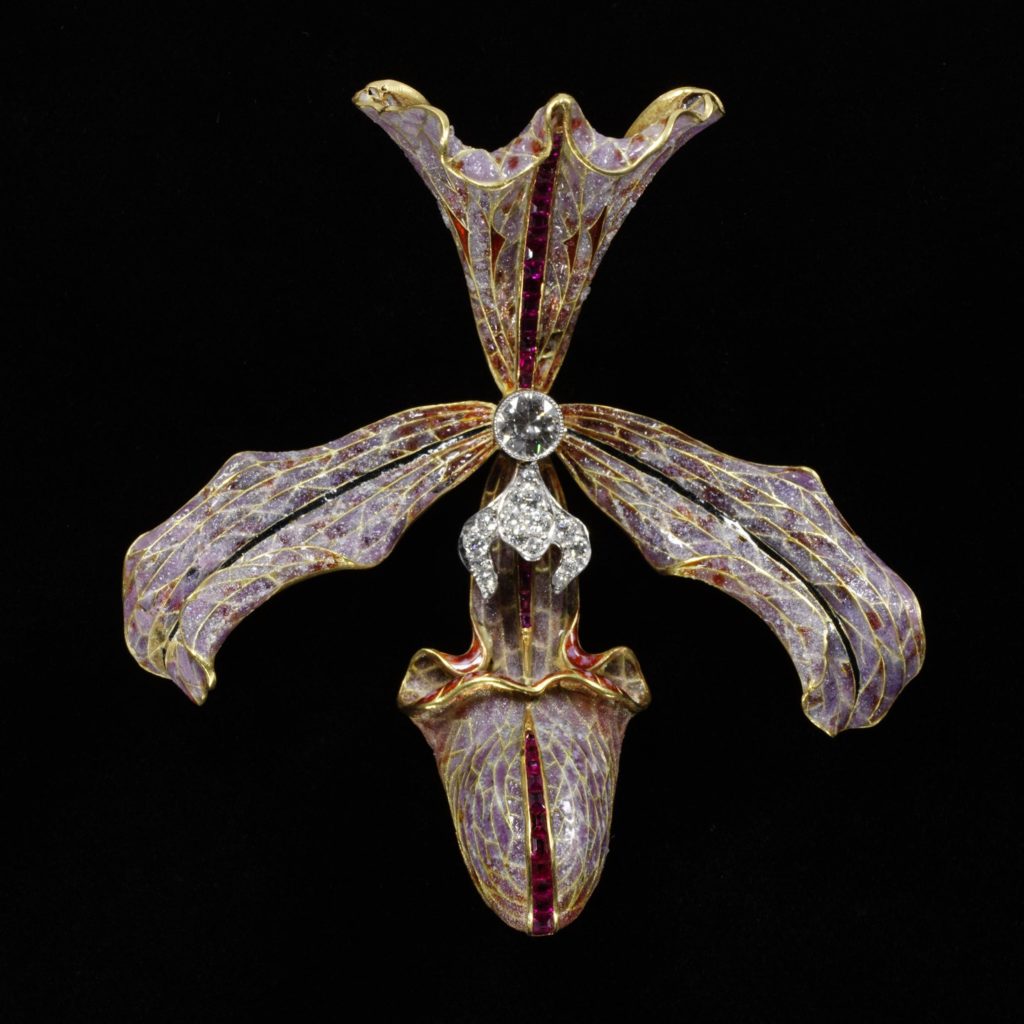


Philippe Wolfers was one of the most prestigious of the Art Nouveau jewelers working in Belgium. Similar to his Parisian contemporary René Lalique, the natural world was his great inspiration. Exotic orchids feature in the work of both, their fluid lines rendering themselves beautifully in Art Nouveau style. The technical achievement of enameling in plique-à-jour (backless) enamel on these gently rolling surfaces is impressive.
Have you ever visited the Victoria and Albert Museum jewelry collection? What are your favorite pieces? Would you wear nature-inspired jewelry?
DailyArt Magazine needs your support. Every contribution, however big or small, is very valuable for our future. Thanks to it, we will be able to sustain and grow the Magazine. Thank you for your help!